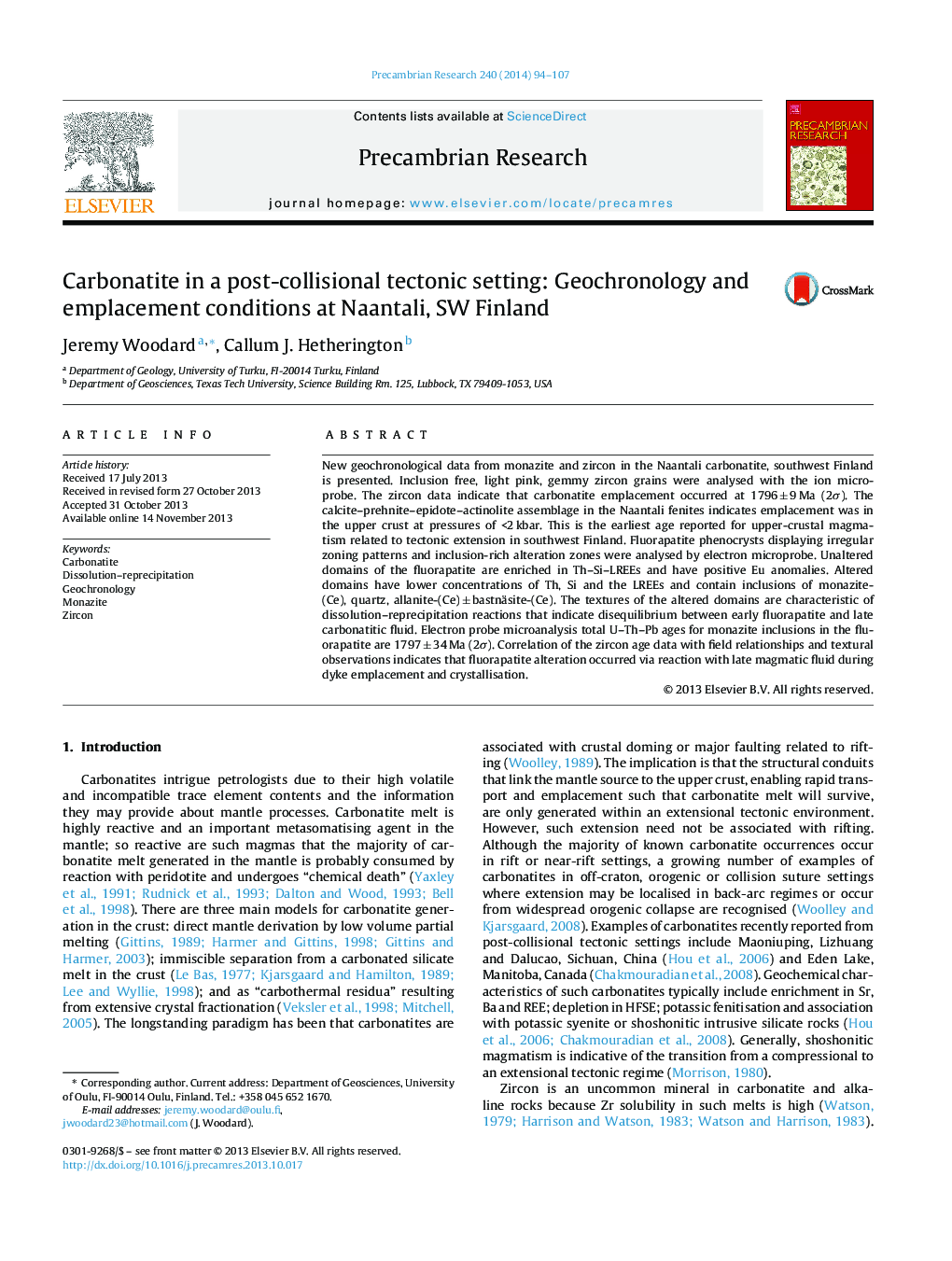| Article ID | Journal | Published Year | Pages | File Type |
|---|---|---|---|---|
| 4723029 | Precambrian Research | 2014 | 14 Pages |
•Carbonatite intruded in a post-collisional tectonic setting at 1796 ± 9 Ma.•Constrains minimum age for onset of tectonic extension in southwest Finland.•U–Th–Pb ages for monazite inclusions in fluorapatite are 1797 ± 34 Ma.•Monazite inclusions formed when fluorapatite reacted with late magmatic fluid.
New geochronological data from monazite and zircon in the Naantali carbonatite, southwest Finland is presented. Inclusion free, light pink, gemmy zircon grains were analysed with the ion microprobe. The zircon data indicate that carbonatite emplacement occurred at 1796 ± 9 Ma (2σ). The calcite–prehnite–epidote–actinolite assemblage in the Naantali fenites indicates emplacement was in the upper crust at pressures of <2 kbar. This is the earliest age reported for upper-crustal magmatism related to tectonic extension in southwest Finland. Fluorapatite phenocrysts displaying irregular zoning patterns and inclusion-rich alteration zones were analysed by electron microprobe. Unaltered domains of the fluorapatite are enriched in Th–Si–LREEs and have positive Eu anomalies. Altered domains have lower concentrations of Th, Si and the LREEs and contain inclusions of monazite-(Ce), quartz, allanite-(Ce) ± bastnäsite-(Ce). The textures of the altered domains are characteristic of dissolution–reprecipitation reactions that indicate disequilibrium between early fluorapatite and late carbonatitic fluid. Electron probe microanalysis total U–Th–Pb ages for monazite inclusions in the fluorapatite are 1797 ± 34 Ma (2σ). Correlation of the zircon age data with field relationships and textural observations indicates that fluorapatite alteration occurred via reaction with late magmatic fluid during dyke emplacement and crystallisation.
